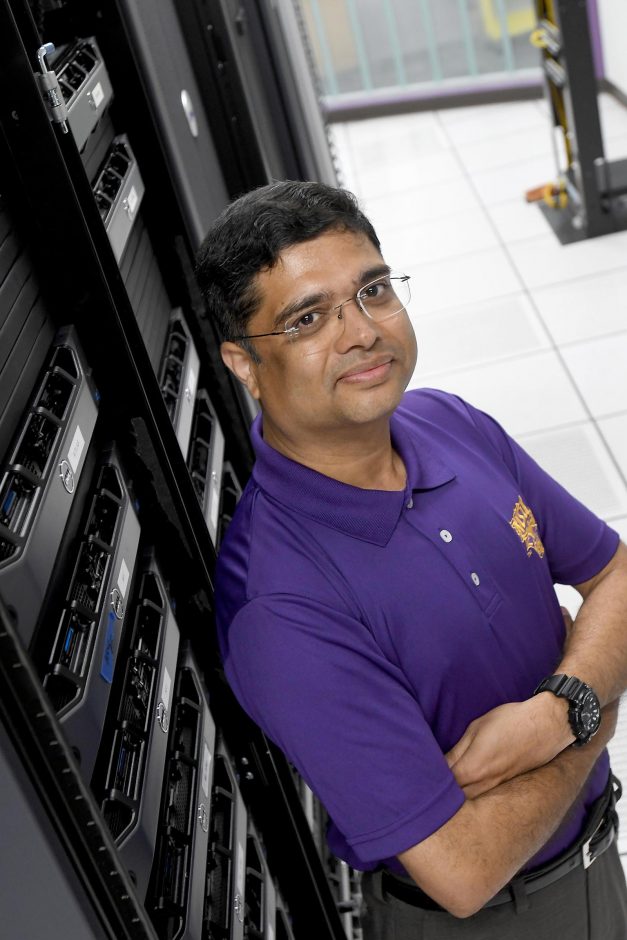With everybody using everyday technology everywhere, each click, swipe, like and download is noted somewhere in the digital cosmos known as Big Data. And industries of all sorts are paying handsomely those who can translate those ones and zeros into useful, profitable information.
“The company that wins the race in this environment is the one that knows how to harness value out of data,” said Rajeev Bukralia, associate professor in Computer Information Science.

Bukralia said that for students studying data science, good things await. The latest – wait for it – data indicates salaries for entry-level data scientists is around $117,000. This fall marks the University’s first semester offering a data science master’s degree, developed by Bukralia and his colleagues.
The two-year program, offered on campus and at the 7700 France building in Edina, is designed to be accessible to students from varying areas of study. Just as everyday technology that emits data isn’t limited to tech-heads, the data science program isn’t designed solely for math, science or IT types.
“Our students are going to come from different backgrounds,” Bukralia said. “So their bachelor’s degree could come from linguistics. Or psychology. Or sociology. Or computer science or mathematics or business management. They all have a value for data science. … It doesn’t matter where their background is, they can gain the necessary technical skills through the program,” he said.
In addition to addressing business and other strategies, the courses will examine how data feeds the artificial intelligence, or A.I., that’s transforming the culture, from SIRI to self-driving cars to medical research at super-human levels.
Some recent projects using data science at the University:
- Glaucoma. An ongoing research project using a specialized artificial intelligence computer to detect glaucoma. The University recently purchased two highly sophisticated computers to support the data science program and A.I. research.
- Diabetes. A group of students recently competed to predict which types of patients have a greater likelihood of developing diabetes. “If we can make that kind of a prediction, we can possibly give more effective intervention in a timely manner that can help save money for everyone in the health care system, including improving the lives of the patient,” Bukralia said.
- Beer. “I have a student in the program who works for a brewery. What should be the right composition of ingredients, what should be the right temperature. If you change that, what happened to the taste? What happens to the consistency? There’s a lot of data in there.”
“Its applications,” Bukralia said, “are literally ubiquitous.”
DO THE RIGHT THING
In several courses, the program will address the ethical implications of mining and using data, i.e. how much of knowing someone’s behavior is too much?
“Technology is inherently not good or bad. It’s how we use it,” Bukralia said. “This technology of smart phones has created so much value for us, while at the same time a lot of people are addicted to it. And they are not doing other things, like interacting with other humans. So technology is a double-edged sword.”
More nefarious are threats to privacy and, even, fairness. Data is often used to make general assumptions about race, gender, and other factors that can prevent, for instance, someone getting a bank loan.
“For example, a bank is interested in using data science so that they can extend loans to only those people who have the greater ability to return it back. So they are interested in identifying people who have a greater likelihood of going bankrupt – they don’t want to extend a loan to those people. Right?” This, he said, could lead to big trouble through discrimination and inaccuracy.
“One of the pitfalls of data science [is that] it can have some privacy related concerns, it can have discrimination related concerns. It can have Big Brother concerns. There are lots of things there.
“We teach the student that as a data scientist they need to be aware of their social responsibility.”
INDUSTRY PARTNERS
Data used in the coursework is both contained data for teaching students but also out in the wild, waiting to be wrangled. Students will work with data ranging from publicly available datasets from government agencies to private companies that make their data public.
The University has several industry partners who will likely work with the program, giving students ideal scenarios to mine the data and deliver results.
“It’s not just that students are learning the theory, they are actually working on practical, hands-on problem that has some value for an organization.”
Such partnerships give students some practical experience while allowing companies to be in touch with University students in advance.
“Which is good for the companies too because they are looking for talent in this area. The demand is so high in this area. The salaries are staggering.”
For additional information on the master’s program in data science, visit https://link.mnsu.edu/datascience.
Speak Your Mind